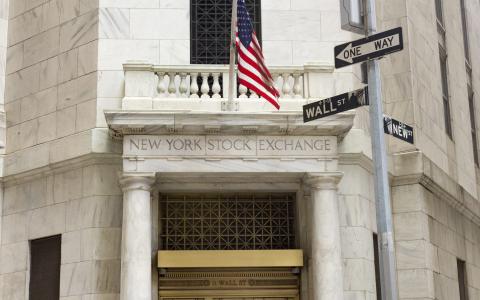
Over the past seven months, the S&P 500 has enjoyed a remarkably smooth ascent, appreciating by 26% since late October. This persistent rally has begun to sway even the staunchest skeptics among Wall Street's bearish strategists. However, a subtle shift may be underway, signaling potential trouble for the market.
Jon Wolfenbarger, founder of BullAndBearProfits.com and a former investment banker with JPMorgan and Merrill Lynch, recently highlighted several indicators suggesting that the market could be nearing a peak. One key concern revolves around historical patterns observed during Federal Reserve rate hiking cycles. Typically, stocks climb until the Fed initiates rate cuts, which historically have preceded significant market downturns, as witnessed in 2000 and 2008. With rate cuts anticipated later this year, this could signal a turning point for the market.
The underlying rationale for the Fed's rate adjustments is crucial. The central bank aims for a soft landing, reducing inflation without severely impacting consumer spending or employment. If inflation retreats from its current 3.4%, the Fed might lower rates to ward off a recession. Conversely, persistently high inflation could necessitate sustained high rates, potentially destabilizing the economy and forcing a rate cut under less favorable conditions, which would likely depress the market.
Additionally, Wolfenbarger notes a concerning trend in unemployment rates. A recent uptick beyond the two-year moving average—a pattern previously observed just before the recessions of 2001, 2007, and 2020—suggests potential economic trouble ahead. This is mirrored in the S&P 500's performance during these periods, where significant increases in unemployment have correlated with sharp declines in stock prices.
Corporate earnings also play a critical role in gauging market health. While first-quarter earnings were stable, a downturn in conjunction with a slowing economy could further pressure stock prices.
Wolfenbarger’s analysis leads to a stark projection: a potential decline of over 50% in the S&P 500, exacerbated by what he perceives as excessive investor optimism and complacency. Current market valuations, as evidenced by the elevated Shiller CAPE ratio and the low levels of the CBOE Volatility Index, seem to underscore this overconfidence.
Inflation persistence, high interest rates, and classic recession signals like the Treasury yield curve inversion—which has reliably forecasted downturns—further complicate the outlook. Wolfenbarger is skeptical of the prospects for a soft landing following a significant Fed rate hike and yield curve inversion, noting, "There has never been a soft landing after a significant Fed rate hiking cycle and yield curve inversion like we have seen in this cycle. We do not think it is wise to bet on something like that happening for the first time in history."
The severity of potential bear markets has historically correlated with the duration of yield curve inversions. The current 580-day inversion suggests a potential 65% drop for the S&P 500.
Wolfenbarger began issuing warnings about a market crash in late 2021, and although the market briefly declined by 25%, it has since rallied 47% since October 2022. Despite his bearish stance, which aligns him with notable pessimists like Jeremy Grantham, Marko Kolanovic, and Albert Edwards, the market’s resilience—buoyed by a robust job market and consumer spending—continues to reward optimistic investors. Whether Wolfenbarger’s grim forecast materializes will hinge on the economy's ability to withstand ongoing Fed tightening measures.



